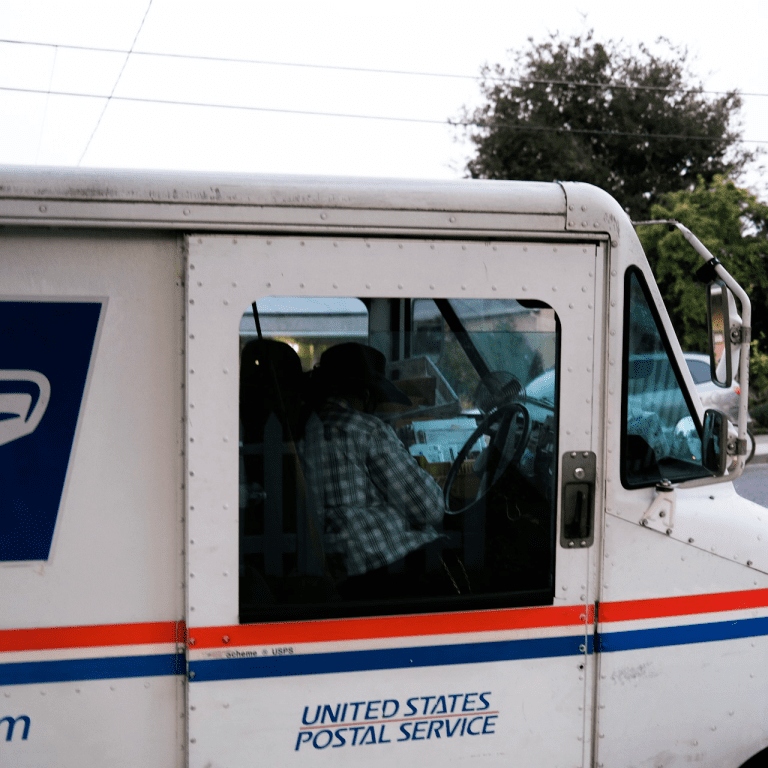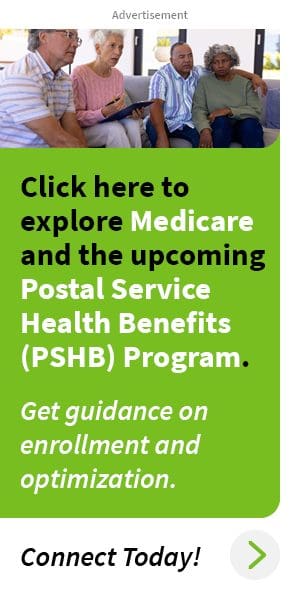Key Takeaways
-
Enrolling in Medicare isn’t just optional under the Postal Service Health Benefits (PSHB) Program—for many, it’s required to maintain full coverage.
-
Understanding how Medicare coordinates with your PSHB plan determines whether you get seamless care or face costly gaps.
Medicare Isn’t a Backup Under PSHB—It Becomes Central
When you turn 65 and become eligible for Medicare, your health coverage setup under PSHB changes significantly. If you’re a Postal Service annuitant or a covered family member who is Medicare-eligible, Medicare becomes your primary payer, and your PSHB plan becomes secondary.
This means Medicare pays your eligible health claims first. Then your PSHB plan reviews what Medicare paid and covers some or all of the remaining out-of-pocket costs. But here’s the issue: if you don’t enroll in Medicare Part B when required, your PSHB plan might not pay what it would have if Medicare had been billed first.
What Triggers This Switch?
The shift happens automatically at age 65 if you are eligible for Medicare Part A and Part B. Under the PSHB rules that apply in 2025 and beyond:
-
If you were retired on or before January 1, 2025, you may be exempt from the mandatory Medicare Part B enrollment.
-
If you were still an employee as of January 1, 2025, and are turning 65, you are expected to enroll in Medicare Part B to retain full PSHB benefits.
-
Covered family members who are Medicare-eligible must also enroll in Part B if they want the same level of secondary coverage.
If you don’t follow this rule, your PSHB plan may treat your claim as if Medicare paid first even though you didn’t enroll. That leaves you responsible for the amount Medicare would have covered.
How PSHB and Medicare Work Together in 2025
Once Medicare becomes primary, your health care costs are split between Medicare and your PSHB plan. Here’s how coordination typically works:
Medicare Covers First
-
Part A covers inpatient hospital care, hospice, skilled nursing, and some home health services.
-
Part B covers doctor visits, outpatient care, medical equipment, preventive services, and more.
Then PSHB Kicks In
After Medicare pays its share:
-
Your PSHB plan covers some or all of the remaining costs depending on your plan design.
-
Some PSHB plans waive deductibles and coinsurance if you are enrolled in both Part A and Part B.
-
Prescription drugs are handled through a Medicare Part D plan offered via PSHB, not through Original Medicare.
In many cases, this dual coverage setup results in lower out-of-pocket costs—but only if you are properly enrolled in Medicare Part B.
What You Need to Do by Age 65
You’ll want to act well in advance of your 65th birthday. Medicare has a 7-month Initial Enrollment Period (IEP) that includes:
-
3 months before the month you turn 65
-
The month of your 65th birthday
-
3 months after
Enroll early in that window to avoid delayed coverage and late enrollment penalties.
If you miss this window, you may need to wait until the General Enrollment Period (January 1 to March 31), with coverage starting July 1 and potential late penalties applying.
Why Some Delay Enrollment—And Why That’s Risky
Many annuitants assume PSHB offers all the protection they need. Some may try to delay enrolling in Medicare Part B to save on the monthly premium. However, this delay can backfire.
If Medicare should have paid first, but you’re not enrolled, PSHB can:
-
Deny or reduce payment on claims
-
Force you to pay out of pocket for what Medicare would have paid
-
Consider you “not fully covered” for certain services
In 2025, Medicare Part B premiums are $185 per month, and while that might feel like an added cost, the financial exposure of skipping Part B could be far greater.
Medicare Part D: The Drug Coverage Tie-In
If you are enrolled in Medicare through PSHB, you’ll get your prescription drug coverage through a Part D Employer Group Waiver Plan (EGWP). This is not optional. Opting out means losing drug coverage altogether under your PSHB plan.
Key features in 2025:
-
A $2,000 cap on out-of-pocket prescription drug costs
-
$35 monthly insulin cap
-
Expanded pharmacy network
If you decline the EGWP plan or fail to enroll in Medicare when required, your drug coverage may terminate—and you may not be able to re-enroll until the next Open Season.
Secondary Coverage Doesn’t Mean Duplicate Coverage
Some people mistakenly believe that keeping PSHB means they don’t need Medicare, or that the two are redundant. But they are structured to work together.
Here’s why you need both:
-
Medicare pays first, reducing your out-of-pocket burden.
-
PSHB picks up what Medicare doesn’t (within plan limits).
-
Certain PSHB benefits only apply if you have Medicare Part B.
Your PSHB plan is not a fallback; it’s the second layer of protection. Without Medicare, you’re missing the first layer.
If You’re Still Working at 65
If you’re an active Postal Service employee, Medicare will not become primary until you retire. You may choose to delay Medicare Part B enrollment without penalty if you’re still covered under your PSHB employment-based plan.
However, once you retire, Medicare becomes primary, and you must enroll in Part B unless you meet an exemption.
Exceptions and Special Circumstances
There are some situations in which you may be exempt from the mandatory Medicare Part B requirement under PSHB:
-
You retired on or before January 1, 2025
-
You or a family member are age 64 or older as of January 1, 2025, and still working
-
You reside overseas with no Medicare provider access
-
You qualify for VA or Indian Health Services coverage and meet certain criteria
These exceptions are narrow. For most annuitants turning 65 in 2025 or later, Medicare Part B enrollment is expected and necessary.
Open Season Isn’t When You Enroll in Medicare
Many confuse the PSHB Open Season (held annually from November to December) with Medicare enrollment periods. They are separate processes:
-
PSHB Open Season allows you to change plans within the PSHB program.
-
Medicare enrollment follows its own deadlines and must be completed through Social Security.
Make sure to handle both on time and separately to avoid coverage issues.
What About Medicare Advantage?
Medicare Advantage (Part C) plans are not part of the standard PSHB setup. While technically possible to enroll in one, doing so can lead to fragmented or overlapping coverage if not handled carefully.
For PSHB enrollees:
-
Medicare Original Medicare + PSHB coordination is the intended structure
-
Enrolling in a separate Medicare Advantage plan may interfere with prescription drug coverage and cost-sharing integration
-
Many PSHB plans do not coordinate well with Medicare Advantage
Unless you fully understand the implications, sticking with Original Medicare and your PSHB plan is usually the safer route.
Take Stock of Your Plan Before You Turn 65
Don’t wait until your 65th birthday is around the corner. Starting at age 64, you should:
-
Review your eligibility for Medicare Parts A and B
-
Understand whether you’re exempt from mandatory enrollment
-
Evaluate your current PSHB plan’s coordination with Medicare
-
Look at how prescription drugs are covered under the EGWP plan
You Can’t Afford to Guess How This Works
The integration of Medicare and PSHB isn’t just about extra benefits—it’s about making sure you remain fully covered in retirement. Misunderstanding who pays first or skipping Medicare enrollment can leave you exposed to unnecessary costs.
Take time to review your plan documents, timelines, and eligibility. And if anything is unclear, now is the time to ask for guidance.
Get in touch with a licensed agent listed on this website who can help you clarify your situation, explain your obligations, and avoid costly mistakes. The sooner you understand this relationship, the better positioned you’ll be to protect your health and your finances.










